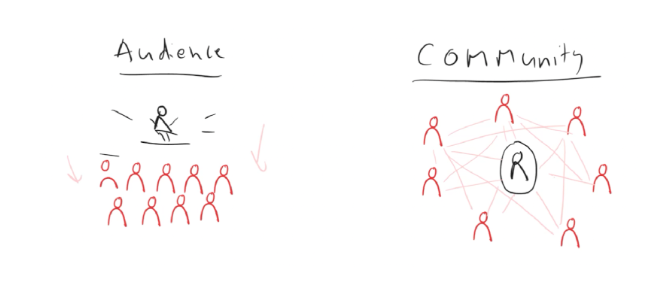7 Crypto Marketing Fundamentals Every Web3 Founder Needs to Know

Crypto marketing is unlike any other category. It’s fast, fragmented, and constantly evolving. What worked six months ago might already feel outdated today. Yet despite the speed, many Web3 founders and teams keep making the same marketing mistakes over and over, because they’ve never been taught the real fundamentals.
This post is here to fix that.
If you're building in Web3, understanding crypto marketing fundamentals can be the difference between shipping products no one sees and becoming the protocol everyone is talking about. Below, we’ll break down the seven most important crypto marketing truths that are rarely taught but essential to success.
1. You’re not just building a product, sometimes you’re building a market
In traditional tech, you might slot your product into an existing category with a defined buyer. In crypto, you’re often inventing both the product and the category.
You can’t rely on existing demand, you have to manufacture it. That means educating users, changing their beliefs, and convincing them that your way is the future.
A DeFi protocol might have the most elegant smart contracts, but unless it teaches users why its approach is safer, faster, or more aligned with their goals, it’ll remain invisible. The same goes for infrastructure projects, wallets, L2s, and DAOs.
Effective crypto marketing focuses on narrative creation. It builds mental models, repositions user expectations, and articulates a compelling reason why your approach makes sense now.
Ask yourself: “What needs to be true about the world for people to want this product?” Then build content that makes that truth feel inevitable.
2. No one cares about your product until you show them why they should
Founders fall into the trap of leading with features. But users don’t care about the tech unless they believe it solves something they care about.
Start with the user:
- What are they struggling with?
- What solutions have failed them before?
- What would a “win” look like to them?
Until you speak to those needs, your product won’t matter. Your marketing has to bridge the gap between the user’s lived experience and your product’s potential.
For example, if your rollup uses zero-knowledge proofs to speed up transaction times, don’t just talk about the tech. Show how it means users don’t have to wait 45 minutes for a bridge confirmation.
Your job is to reframe the user’s world in a way that makes your product feel obvious, not just available.
3. Strategy isn’t just what you do, it’s also what you don’t do
Crypto rewards speed. But marketing is still about focus. Strategy is not your to-do list, it’s your filter.
A strong crypto marketing strategy defines:
- Who your target users are, with specifics
- Where they spend their time
- What language, values, and narratives move them
If something doesn’t serve that goal, skip it. You don’t need a TikTok strategy if your users are validator operators on GitHub.
Avoid vanity metrics. Avoid trend-chasing. Avoid tactics that win attention but not adoption. Every tactic should serve a core insight about your user. If it doesn’t, it’s a distraction.

4. Community ≠ Audience (And that’s a good thing)
Many crypto teams conflate followers with community. But an audience listens, a community participates. And participation is where the magic happens.
Real communities are:
- Aligned by values or vision
- Energized by shared incentives
- Engaged with each other, not just the core team
Projects like NounsDAO or Superteam do way more than just post updates, they empower members to shape the ecosystem. That’s community.
To build this, you must:
- Give people roles to play
- Design experiences that reward contribution
- Highlight and share user-led success
The result? A decentralized marketing engine that keeps spinning, even when you’re not online.
Don’t just build for your community. Build with them, around them, and through them.
5. Growth loops > growth hacks
Web3 has seen every shortcut in the book, from airdrop farmers to bot raids and speculative hype cycles. But none of these drive traction, only traffic.
The alternative? Sustainable growth loops:
- A referral system where each new user brings another
- A content engine where one post creates ten pieces
- A community reward program that multiplies engagement
Loops create momentum. Hacks create noise.
Strong loops share three traits:
- They are repeatable and scalable
- They benefit the user, not just the team
- They get stronger with use
You don’t need to go viral, you need to be valuable, then let your users carry the message forward.
6. Mindshare before market share
For far too long, crypto has been a race for users, but it’s actually a race for meaning.
Before someone joins your Discord, mints your NFT, or locks tokens in your protocol, they must first believe you matter. This is what we call mindshare, and it’s the invisible battlefield of crypto.
Projects with strong mindshare:
- Set the narrative for their category
- Get cited in research, media, and analyst decks
- Influence investor and builder attention
Mindshare is won through consistent storytelling, smart partnerships, and credible public thought leadership. The brand that defines the problem often becomes the brand that owns the solution.
7. Don’t outsource understanding
Agencies, freelancers, and contractors can amplify your efforts, but they can’t come up with your vision for you.
Understanding your audience, refining your core message, and building emotional resonance with your users are founder-level responsibilities.
The most successful teams bake marketing into product:
- They interview users weekly
- They test language in community calls
- They make go-to-market a sprint, not an afterthought
You don’t need to write every blog post, but you do need to define the voice, tone, and principles that drive your story. Marketing is how you build belief at scale.
You’re Not Just Shipping Code, You’re Shaping Culture
Crypto is still young. Every project helps define what this space becomes, and your marketing is how your protocol becomes meaningful in the space.
Get the fundamentals right:
- Speak to real people, not abstract personas
- Build value before you chase visibility
- Turn users into believers, and believers into advocates
The projects that master these lessons don’t just grow, they lead.
Want help mapping your crypto marketing strategy or building a system around your brand narrative? DM us and book a free call with our team to get support that’s grounded in what actually works.

